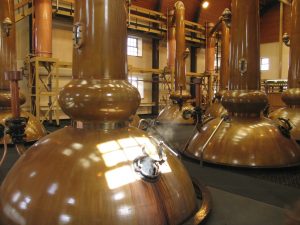
While many people have a general idea of how alcohol is made, few can tell you exactly how the process works. The drivers of the process are enzymes – molecules that act as catalysts for chemical reactions, and yeast – small microorganisms used in the production of food and alcohol. To make alcohol, the yeast uses enzymes to metabolize sugar dissolved in water, much like we metabolize the food we eat every day; the difference is the byproduct of the process, which for yeast would be ethanol – more commonly known as alcohol.
This process explains why most alcoholic beverages will have a distinctly sugary taste. For non-sugary beverages made from things other than sugars and fruits (e.g. beer and whisky which are made from grains) the grain needs to be converted into sugar before the alcohol is made. Thankfully, as grain seeds begin to sprout, they convert the starches surrounding the sprout into sugar naturally, this process is known as malting. Producers combine seed and ground starch in water to create the necessary sugar to feed the yeast and produce the ethanol used to make alcohol.
Source: The Chuck Cowdery Blog, January 2017
